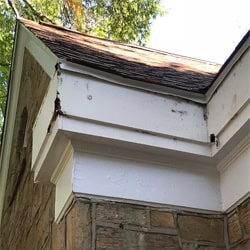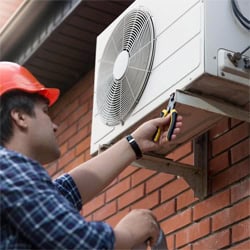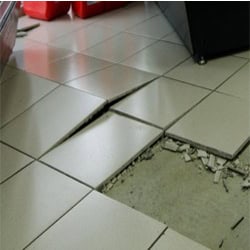Comprehensive Guide to Home Surveys (4 Hidden Issues)

A home survey is an indispensable step in the buying or selling of a home. It provides a thorough assessment of the home’s condition and highlights any potential faults or problems. A home survey can help a buyer or seller save a large amount of money by identifying issues early. It helps to make sure that both buyers and sellers have a comprehensive grasp of the home’s condition and can make decisions about the property.
A home survey gives potential buyers the chance to learn everything there is to know about the house they are thinking about buying. It enables them to make informed decisions regarding the state of the house and any repairs or enhancements that are required while buying. Additionally, it offers them negotiating power with the seller because they can use any problems found to demand price reductions or repairs before closing.
Before listing their house for sale, sellers can leverage a home survey as a tool to find and fix any potential problems. As a result, there will be less chance of any unpleasant revelations throughout the sale process. Additionally, it can be used as a marketing tool to show prospective buyers that the home is in good condition and has been inspected.
As a buyer, the best time to set up your survey is as soon as your offer has been accepted, because it can identify expensive maintenance needs or other issues that could affect how much you are willing to pay for the property. Alternatively, if time constraints are less of an issue, and you are not a part of the chain, you might wish to insist that the seller perform any requisite repairs at their own expense before the contract closing.
4 Issues to Consider When Purchasing a Home
1. Structural Issues

- Termite or wood rot damage: A home’s structure may be weakened by termite or wood decay, necessitating expensive repairs. These problems, which may be brought on by inadequate ventilation, wetness, or improper maintenance, might be found during a home survey.
- Roof problems: Leaks, water damage, and other problems might be caused by a roof that is not in good condition. A house inspection might identify issues including broken or missing shingles, worn flashing, or signs of leaks.
- Wall movement or cracks: Wall movement or cracks may be an indication of structural issues. Poor construction, settling, or foundation shifting are possible causes of these problems.
It’s critical to identify structural problems as soon as possible because repairs for them can be expensive and time-consuming. A house survey can ensure that potential buyers and sellers are aware of any structural issues and can come to conclusions regarding the property based on the information provided.
See related article: Is It Better to Move House or Extend?
2. Electrical and Plumbing Issues
A home’s plumbing and electrical systems are crucial for both functioning and safety. Potential problems with these systems can be found during a home survey, such as:
- Electrical wiring issues: Damaged or outdated wiring can cause power outages and pose a fire risk. Frayed wires, out-of-date circuit breakers, or insufficient electrical capacity are a few critical issues that might be found during a house inspection.
- Plumbing leaks or outdated systems: Systems with leaks or that are obsolete can cause water damage, mould growth, and other problems. Problems like rusted pipes, leaking faucets, or inadequate ventilation can be found during a house inspection.
Plumbing and electrical problems can be risky and expensive to repair. It’s crucial to detect them as soon as you can to eliminate any safety risks and to avert damage to the house. A house survey may ensure potential buyers are aware of any electrical and plumbing issues and can draw conclusions regarding the property based on the facts.
3. Heating and Ventilation

- Age and condition of the heating systems: Older or less reliable systems may be less efficient, experience more frequent failures, and require more maintenance. Inadequate maintenance, rust or corrosion, worn or missing parts, and other issues can be found during a home inspection.
- Concerns about air quality and proper ventilation: Maintaining good indoor air quality and avoiding mould, mildew, and other problems requires proper ventilation. A survey of the home can spot issues like inadequate ventilation, mould or mildew growth, or the need for air duct cleaning.
It’s important to notice heating and ventilation concerns as soon as possible because they can be costly and cumbersome to address. To make sure both buyers and sellers are aware of any potential difficulties and can make informed decisions regarding the property. It’s also crucial to keep in mind that in the UK, a property’s energy efficiency is a crucial consideration and that a valid Energy Performance Certificate (EPC) is necessary when buying a property from the prospective seller.
4. Cosmetic Issues

- Peeling wallpaper or paint: Peeling wallpaper or paint may be an indication of improper maintenance or an underlying moisture issue. Additionally, it can be a sign of mold growth or moisture. Any repairs or enhancements that are required to take care of these problems can be suggested by a home survey.
- Damaged tile or flooring: Damaged tile or flooring can be unappealing and also signify inadequate upkeep. Any repairs or replacements required to enhance the appearance of the home can be suggested by a home survey.
- Out-of-date fixtures or cabinetry: Out-of-date fixtures or cabinetry can decrease the curb appeal of a home and make it look old-fashioned. Any essential repairs or replacements to bring the house into the modern era and enhance its appeal can be suggested by a home survey.
Despite being seemingly modest, cosmetic problems can still significantly alter a home’s appearance. A home survey can assist buyers and sellers in locating any potential aesthetic problems and can also suggest any required repairs or enhancements to deal with. A home survey report will also mention any restrictions that must be followed when dealing with cosmetic issues, such as the “Period properties” regulations, which apply to buildings older than 1919 and specify the types of materials, methods, and workmanship that must be used on them.
Conclusion
In this blog post, we’ve covered a wide range of issues that could be found during a house inspection, including structural problems, electrical and plumbing problems, heating and ventilation problems, and cosmetic concerns. The usability, security, and appearance of a home can all be significantly impacted by each of these problems.
To minimise any safety risks and expensive repairs and ensure the house is in good shape and condition, any concerns that are discovered must be taken care of as soon as possible. An in-depth understanding of the home’s condition and the ability to make informed decisions regarding the house are two key points of a home survey for buyers.
To sum up, a home survey is a wise investment when you are buying property. It is crucial to speak with a qualified home inspector who can spot any problems that might not be obvious and offer suggestions on how to fix them.
For any house move inquiries, call Transport Executive at (44) 2033 184 720.

